Photos

Photo 1. Estonia is a generally flat country. Coastal plain at Varangu, NE Estonia. Photo by A. Raukas.

Photo 2. The North-Estonian Klint at Ontika. Photo by A. Rõõmusoks.

Photo 3. Drumlins are distinctive relief forms in central Estonia. Within the Saadjärv Drumlin Field they sometimes exceed 10 km in length. Photo by A. Raukas.

Photo 4. Roela esker on the Pandivere Upland. Photo by A. Miidel.

Photo 5. Karst topography at Uhaku above the Erra River, which flows underground along tectonic joints. Photo by A. Miidel.

Photo 6. Moritz von Engelhardt (1779-1842) became the first professor of mineralogy at Tartu University in 1820.

Photo 7. Hendrik Bekker (1891-1925) was the first professor of geology of Estonian nationality.

Photo 8. Eduard Eichwald (1795-1876) introduced the terms Cambrian, Silurian and Devonian into the Estonian scientific literature. He was the first in the Baltic provinces to consider continental glaciations.

Photo 9. Friedrich Schmidt (1832-1908), the “father of Estonian geology”, was the author of many outstanding papers dealing with the bedrock and Quaternary geology.

Photo 10. Armin Öpik (1898-1983) was the successor of Bekker on the chair of geology at Tartu University. He was a distinguished stratigrapher, but his main interest was in the field of palaeontology, documented by a number of famous monographs on brachiopods, trilobites, ostracodes and other groups.

Photo 11. Karl Orviku (1903-81) studied the lithostratigraphy of Estonian bedrock, Quaternary deposits and landforms. He was the main initiator of research into the history of geology, and the teacher of most of the authors of this monograph.

Photo 12. Caspar Andreas Constantin Grewingk (1819-87) was the first to speak about several glaciations in Estonia. He studied Devonian outcrops and the Kunda Stone Age settlement, compiled a geological map of the Baltic States (published in 1861 and 1879) and laid the foundation to the collection of meteorites in Tartu University.

Photo 13. The historically known Aruküla caves near Tartu where since 1831 large placoderms and other Devonian fishes have been excavated. Here is the type locality of the Eifelian Aruküla Stage. Photo by Ü. Heinsalu and E. Mark-Kurik.

Photo 14. Paul William Thomson (1892-1957) pioneered in studying the Devonian plant remains in Estonia and Eemian interglacial deposits at Rõngu. Based on pollen analysis, he proposed the first biostratigraphical schemes of the Holocene and Late-glacial sediments in the area.

Photo 15. Type section of the Lükati Formation in the left bank of the Pirita River at Lükati. In the middle of the section, there is the boundary between the Lükati and Tiskre formations. Photo by G. Baranov.

Photo 16. Klint at Tiskre. The arrow shows the boundary between the Tiskre and Kallavere formations and the Pakerort Stage. Photo by U. Veske.

Photo 17. The Cambrian/Ordovician boundary beds around the Hundikuristik Waterfall in Tallinn. Photo by A. Miidel.

Photo 18. Klint on the island of Väike Pakri. A section from the sandy Billingen Stage (below) to the calcareous Uhaku Stage (top). Photo by Karl Orviku

Photo 19. The rocks of Billingen, Volkhov and Kunda stages are exposed in the scarp of the Jägala Waterfall and in the walls of the canyon. Photo by G. Baranov.

Photo 20. The Suhkrumägi outcrop in Tallinn displays carbonate rocks from the Volkhov to Lasnamägi stages which have been described by many scholars. Photo by G. Baranov.

Photo 21. The steps of the Treppoja Waterfall west of Tallinn have been eroded into the resistant rocks of the Lasnamägi Stage. Photo by A. Miidel.

Photo 22. Panga Cliff on Saaremaa Island. The Jaani Stage crops out in the lower and the Jaagarahu Stage in the upper part. Photo by G. Baranov.

Photo 23. The West-Estonian Klint at Kirbla with reef-mounds of the Muhu Formation (Jaagarahu Stage). Photo by A. Raukas.

Photo 24. Outcrop near the Jaani Cemetery in Tartu is the stratotype of the Aruküla Stage. Photo by H. Viiding.

Photo 25. Sandstones of the Burtnieki Stage in the bank of the Ahja River. Photo by G. Baranov.

Photo 26. An alvar at Kõmsi, western Estonia. Photo by A. Raukas.

Photo 27. Different permafrost phenomena in Estonia are most widespread in Younger Dryas sediments. Late-glacial silts on the bank of the Purtse River. Photo by Karl Orviku.

Photo 28. Subaerial tills in Estonia often display glaciotectonic structures of various sizes that indicate ice sheet activity. Järva till at Lelle, central Estonia. Photo by A. Miidel.
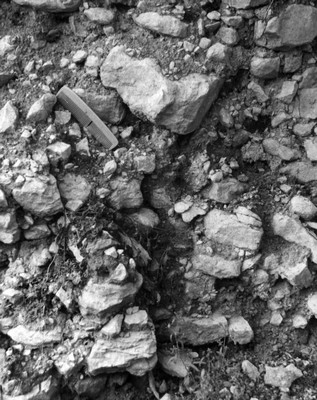
Photo 29. Grey stony till, rich in local carbonate material at Ruila, northern Estonia. Photo by A. Miidel.
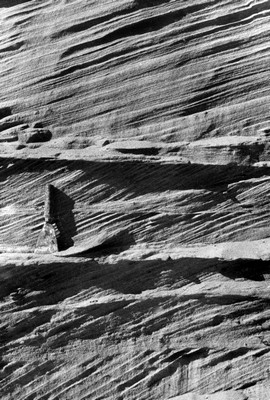
Photo 30. Glaciofluvial delta deposits at Männiku (Tallinn) with the inclination of laminae in the distal direction. Photo by A. Miidel.
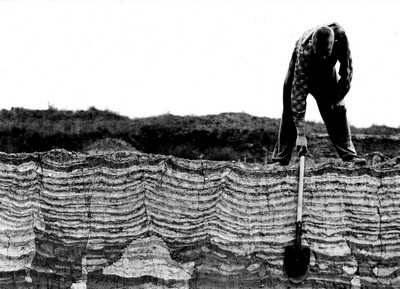
Photo 31. Varved clays in the Tsirgulinna quarry, southern Estonia. Bedding disturbances result from recurrent moistening and drying up of clays. Photo by E. Pirrus.
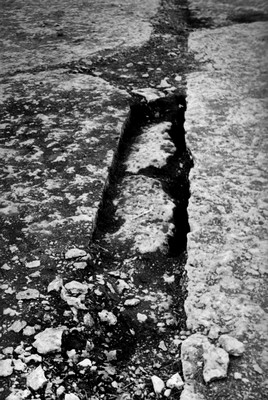
Photo 32. The carbonate bedrock is dissected by joints promoting karst processes and pollution of the upper aquifer systems. Lasnamägi in Tallinn. Photo by A. Miidel.
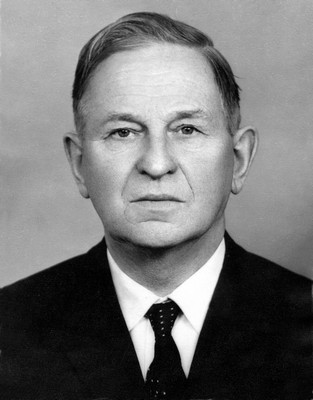
Photo 33. Artur Verte (1901-78), the most prominent Estonian hydrogeologist after World War II. He predicted the existence of different types of mineral water in Estonia and compiled several hydrostratigraphical schemes.
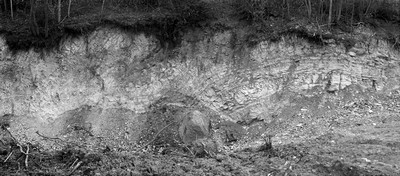
Photo 34. Glaciotectonic structures on the western slope of the Tornimägi Hill, Vaivara End Moraine. Photo by A. Miidel.
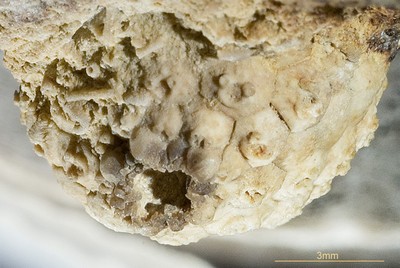
Photo 35. Echinoid Bothriocidaris eichwaldi Männil, holotype, adoral view, Upper Ordovician, Pirgu Stage, Jootma at Tapa, x 9. Photo by G. Baranov.
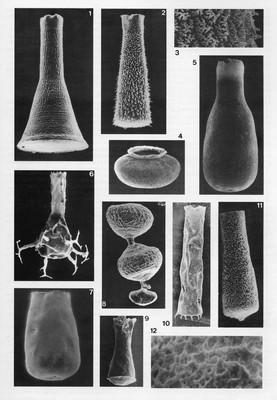
Photo 36. Ordovician and Silurian chitinozoans. 1. Cyathochitina campanulaeformis (Eisenack), Ch 708/5412, Ashgill, Nabala Stage, Eikla borehole, depth 275.5 m, x 230.; 2-3. Belonechitina robusta (Eisenack), Ch 893/4070, Caradoc, Oandu Stage, Kuusiku borehole, depth 10.2 m: 2- x 230, 3- x 1200 (detail). ; 4. Calpichitina complanata (Eisenack), Ch 723/5778, Ashgill, Nabala Stage, Kaugatuma borehole, depth 387.9 m, x 580.; 5. Lagenochitina baltica Eisenack, Ch 907/7405, Ashgill, Pirgu Stage, Jaksai borehole, depth 968 m, x 350.; 6. Ancyrochitina ramosaspina Nestor, Ch 427/1919, Llandovery, Raikküla Stage, Ikla borehole, depth 480.4 m, x 340.; 7. Eisenackitina dolioliformis Umnova Ch 454/10670, Wenlock, Jaani Stage, Jaagarahu borehole, depth 41.7 m, x 500.; 8. Cingulochitina cingulata (Eisenack), Ch 151/1952, Wenlock. Jaagarahu Stage, Ohesaare borehole, depth 294.16 m, x 350. ; 9. Margachitina margaritana (Eisenack), Ch 419/1604, Wenlock, Jaagarahu Stage, Ohesaare borehole, depth 174.4 m, x 465.; 10. Spinachitina maennili (Nestor), Ch 2/1462, Llandovery, Raikküla Stage, Ikla borehole, depth 462.9 m, x 340.; 11-12. Conochitina cribrosa Nestor, Ch 336/1598, Wenlock, Jaagarahu Stage, Ohesaare borehole, depth 188.2 m: 11- x 300, 12- x 2800 (detail).
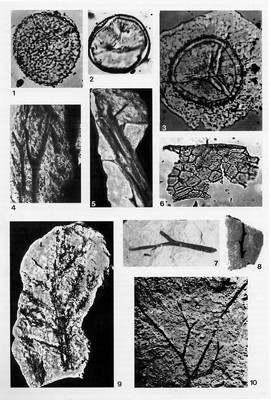
Photo 37. Middle Devonian plant micro- and macrofossils. 1-3. Miospores: 1- x 850, 2- x 650, 3- x 820; 4-5. Branches of Hostinella and/or Psilophytites (either pteridophytes or progymnosperms): 4- x 0.9, 5- x 1.25; 6. Cuticula of Hostinella sp., x 310. All specimens from Pärnu Stage, Tori Member, Tori. 7-8. Branches of the pteridophyte Pseudosporochnus estonicus Kalamees, Burtnieki Stage, Abava beds, Joosu: 7- specimen Va 2193, x 1.3; 8- Va 2197, nat. size. 9. Branches of Hostinella, Gauja Stage, Lode Member, Küllatova, x 4.7. 10. Branches of the progymnosperm Archaeopteris, Gauja Stage, Lode Member, Petseri, x 1.1.

Photo 38. Ordovician and Silurian stromatoporoids and corals. 1-3. Stromatoporoid Clathrodictyon mammillatum (Schmidt), lectotype Co3002, top Ordovician, Porkuni Stage, Porkuni quarry: 1- upper surface, nat. size; 2- vertical section of skeleton, x 10; 3 - horizontal section, x 10.; 4. Tabulate coral Catenipora tapaensis (Sokolov), Pirgu Stage, Tapa, nat. size.; 5. Tabulate coral Favosites aff. gothlandicus, upper surface, Llandovery, Raikküla Stage, Mündi quarry, x 0.7.; 6. Rugose coral Kodonophyllum sp., calyx, Ludlow, Paadla Stage, Unimäe, x 1.2.; 7. Rugose coral Phaulactis sp., side view, Wenlock, Jaagarahu Stage, Sepise, nat. size.
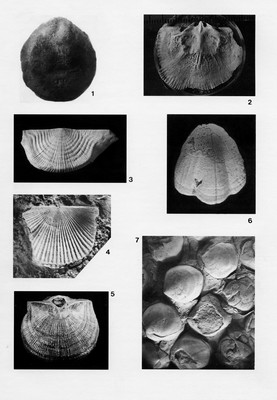
Photo 39. Cambrian to Silurian brachiopods. 1. Inarticulate brachiopod Mickwitzia monilifera (Linnarsson), L. Cambrian, Tiskre Fm., Mustametsa, x 2.5.; 2. Articulate brachiopod Vellamo verneuili (Eichwald), Br 474, interior of dorsal valve, U. Ordovician, Vormsi Stage, Kõrgessaare, x 2.; 3. Articulate brachiopod Leptaena sp., ventral valve, U. Ordovician, Vormsi Stage, Kärrslätt, x 1.2.; 4. Articulate brachiopod Cyrtonotella kuckersiana Öpik, dorsal valve, M. Ordovician, Kukruse Stage, Küttejõu, x 1.2.; 5. Articulate brachiopod Ilmarinia sinuata (Pahlen), ventral view, U. Ordovician, Pirgu Stage, Ambla, x 1.2.; 6. Articulate brachiopod Pentamerus oblongus (Sowerby), Llandovery, Adavere Stage, Vändra, x 0.8.; 7. Coquina of Atrypoidea prunum (Dalman), Ludlow, Kuressaare Stage, Kuressaare, x0.8.; ; Pelecypod superfamilies and rostroconchs: 1 - Praecardiacea; 2 - Pectinacea; 3 - Megalodontacea; 4 - Lucinacea; 5 - Trigoniacea; 6 - Pholadomyacea; 7 - Rostroconchia.
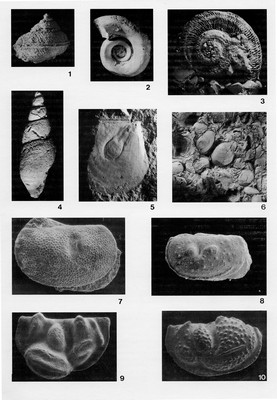
Photo 40. Ordovician and Silurian gastropods, bivalves and ostracodes. 1. Gastropod Crenilunula limata, Wenlock, Jaagarahu Stage, Jaagarahu quarry, x 1.5.; 2. Gastropod Megalomphala taenia (Lindström), TÜG 2/27, Ludlow, Paadla Stage, nat. size.; 3. Gastropod Poleumita discors (Sowerby), Wenlock, Jaagarahu Stage, Jaagarahu quarry, x 2.; 4. Gastropod Subulites amphora (Eichwald), M. Ordovician, Jõhvi Stage, Sompa, x1.2.; 5. Bivalve Kogulanychia bekkeri Isakar, La 1603, internal mould of right valve, Ludlow, Paadla Stage, Kogula quarry. ; 6. Bivalve coquina with Pterioidea, TÜG 40/59, Wenlock, Rootsiküla Stage, Anikaitse Cliff.; 7. Ostracode Retiprimites reticularis Meidla, Os 3181, tecnomorphic right valve, M. Ordovician, Rakvere Stage, Puhmu borehole, depth 132.5 m, x 62.; 8. Ostracode Cystomatochilina clivosa Meidla, Os 2995, left valve, lateral view, M. Ordovician, Rakvere Stage, Vinni borehole, depth 41.4m, x 41.; 9. Ostracode Plicibeirichia numerosa Sarv, Os 5315, heteromorphic left valve, Ludlow, Kuressaare Stage, Kuressaare, x 30.; 10. Ostracode Nodibeirichia protuberans (Boll), Os 5379, tecnomorphic left valve, Pridoli, Ohesaare Stage, Ohesaare Cliff, x 23.
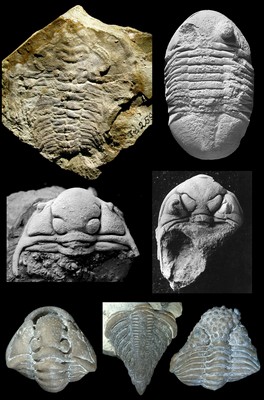
Photo 41. Cambrian to Silurian trilobites. 1. Schmidtiellus mickwitzi (Schmidt), the earliest trilobite from Estonia, L. Cambrian, Lükati Fm., Saviranna, x 1.6.; 2. Neoasaphus sp., a complete specimen, M. Ordovician, Aseri Stage, nat. size.; 3. Cyrtometopus affinis Angelin, Tr 2350, cranidium, L. Ordovician, Kunda Stage, Lõnna, x 3.; 4. Chasmops inge Rõõmusoks, cranidium, M. Ordovician, Oandu Stage, Oandu, x 2.; 5. Calymene frontosa Lindström, Tr 1963, enrolled specimen, Llandovery, Adavere Stage, Konovere River at Lätiküla, x 3.; 6-7. Encrinurus (E.) punctatus (Wahlenberg), Wenlock, Jaani Stage, Paramaja Cliff: 6-Tr 2782, pygidium, x 2.5, 7- Tr 2775, partly enrolled specimen, x 2.6.
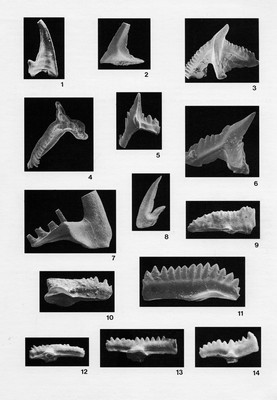
Photo 42. Ordovician and Silurian conodonts. 1. Cordylodus andresi Viira et Sergeyeva, Cn 1082, U. Cambrian, Vihula section, sample 5, x 100.; 2. Paltodus deltifer pristinus (Viira), M element, Cn 1527, L. Ordovician, Pakerort Stage, Varangu borehole, depth 18.60 m, x 100.; 3. Baltoniodus variabilis (Bergström), Pb element, Cn 1528, M. Ordovician, Kukruse Stage, Kohtla section, bed F, x 65.; 4. Eoplacognathus reclinatus (Fåhraeus), Pb element, Cn 1529, M. Ordovician, Lasnamägi Stage, Suhkrumägi, x 40.; 5. Prioniodus elegans Pander, Pb element, Cn 1530, L. Ordovician, Billingen Stage, Voka, x 100.; 6. Amorphognathus tvaerensis Bergström, Pb element, Cn 1531, M. Ordovician, Kukruse Stage, Kaagvere borehole, depth 296.8 m, ; x 100.; 7. Oulodus panuarensis Bischoff, M element, Cn 5518, Llandovery, Raikküla Stage, Kalana quarry, sample Kl-4, x 100.; 8. Oistodus lanceolatus Pander, M element, Cn 1532, L. Ordovician, Billingen Stage, Mäekalda section, sample 7a, x 75.; 9. Ozarkodina roopaensis Viira, Pa element, Cn 1398, Ludlow, Paadla Stage, Karala outcrop, x 50.; 10. Ozarkodina crispa (Walliser) morph, Pa element, Cn 1475, Ludlow, Paadla Stage, Kaugatuma borehole, depth 58.5 m, x 75.; 11. Ozarkodina p. polinclinata (Nicoll et Rexroad), Pa element, Cn 6509, Llandovery, Adavere Stage, Viki borehole, interval 123.3-123.5 m, x 100.; 12. Ozarkodina b. bohemica (Walliser) ß morph, Pa element, Cn 1533, Wenlock, Rootsiküla Stage, Vesiku borehole, depth 8.65 m, x 40.; 13. Ozarkodina remscheidensis eosteinhornensis (Walliser) s.l., Pa element, Cn 1506, Ludlow, Kuressaare Stage, Vaivere outcrop, x 40.; 14. Ozarkodina r. remscheidensis (Ziegler), Pa element, Cn 1445, Pridoli, Ohesaare Stage, Ohesaare Cliff, x 40.
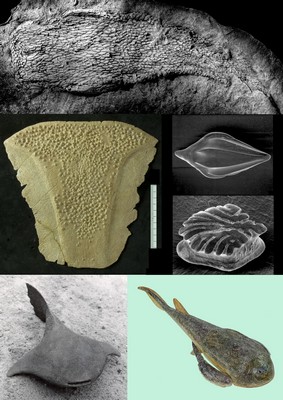
Photo 43. Silurian and Devonian agnathans and fishes. 1. Jawless fish (thelodont) Phlebolepis elegans Pander, Pi 6686, Ludlow, Paadla Stage, Himmiste-Kuigu, x 2.; 2. Thelodont Thelodus admirabilis Märss, scale, Pi 6505, Ludlow, Kuressaare Stage, Sakla borehole, depth 6.2 m, x 60.; 3. Thelodont Katoporodus timanicus (Karatajuté-Talimaa), scale, Pi 6893, Pridoli, Ohesaare Stage, Ventspils borehole, depth 373.6 m, x 100.; 4. Reconstruction of the Middle Devonian, Givetian, giant jawless fish (psammosteid heterostracan) Pycnosteus tuberculatus (Rohon); length of the fish about 2.5 m.; 5. Placoderm fish (arthrodire) Homostius latus Asmuss, anterior median ventral plate, Pi 609. Givetian, Burtnieki Stage, Karksi, x 0.7.; 6. Reconstruction of the Late Devonian, Early Frasnian placoderm (antiarch) Bothriolepis; length of the fish about 30 cm.; ; Index species are in bold characters. vl, kr, tr: Viljandi, Kureküla and Tarvastu beds of the Aruküla Stage; hm, kr, ab: Härma, Koorküla beds and Abava Substage of the Burtnieki Stage; Gj, gjS: Gauja Stage and Sietiši Member of the Gauja Stage; Am, Amata Stage; Pl, plS, Plavinas Stage and Snetnaya Gora Member of the Plavinas Stage.; ; Index species are in bold characters. “<“, “>” show an earlier and later occurrence, respectively. V, L, K: Vadja, Leivu and Kernave members of the Narva Stage; vl, kr, tr: Viljandi, Kureküla, Tarvastu beds of the Aruküla Stage; hm, Härma beds of the Burtnieki Stage.

Photo 44. In the Holocene, the bedrock topography was significantly affected by the waves of the Baltic Sea. The profile on the Island of Osmussaar displays the heterogeneity of the lithological composition in the lower part of the limestones of the Lasnamägi Stage and upper part of the Uhaku Stage. Photo by Karl Orviku.
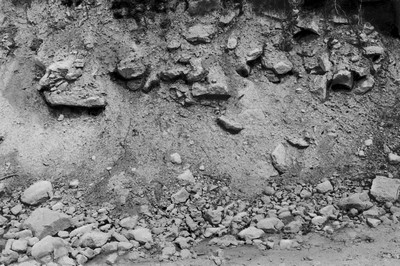
Photo 45. End moraines often occur on proximal slopes of bedrock elevations. Tamsalu-Naistevälja push moraine (North Estonia) with poorly rounded particles of the local bedrock. Photo by A. Miidel.
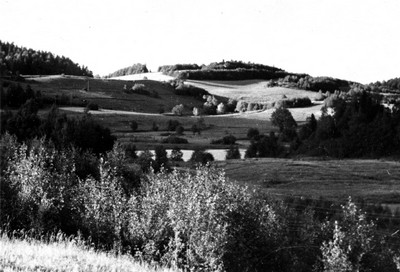
Photo 46. Hilly glacial relief is widespread in areas with a rapidly changing bedrock topography. Otepää Heights. Photo by B. Murd.
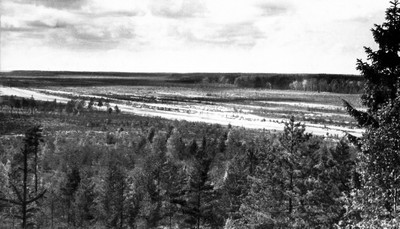
Photo 47. Typical sandurs are absent among ice-marginal formations in Estonia, but glaciofluvial deltas formed in proglacial lakes, are relatively abundant. Pühamäe Glaciofluvial Delta in northern Estonia. Photo by A. Raukas.
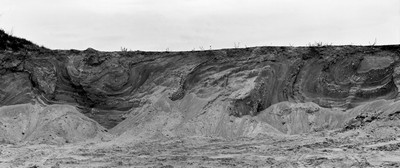
Photo 48. Traces of glacial push in the Tulimäe Hill in the proximal part of the Otepää Heights near Valguta. Photo by A. Miidel.
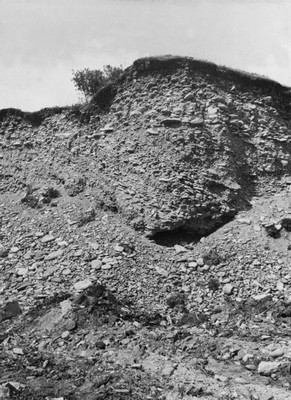
Photo 49. A coarse-grained shingle barrier spit of the Ancylus transgression (AI) at Iru is characterised by a great thickness of deposits. Photo by A. Miidel.
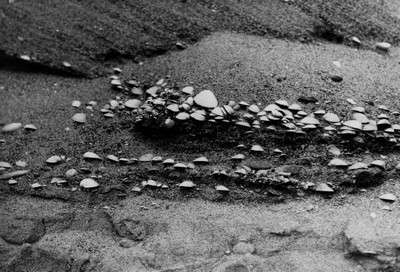
Photo 50. Coastal formations in Estonia often contain subfossil mollusc shells. Cerastoderma glaucum shells in the Limnea Sea beach deposits at Järve, Island of Saaremaa. Photo by A. Miidel.
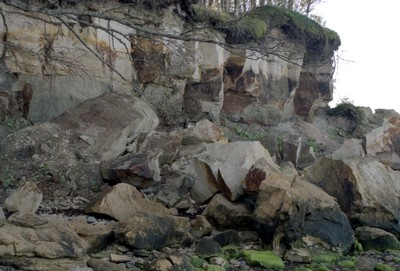
Photo 51. During the last decades, Estonian beaches have repeatedly suffered heavy storm damage. Beach at Rocca al Mare, west of Tallinn. Photo by A. Miidel.
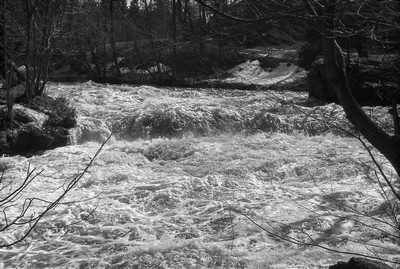
Photo 52. In many cases a considerable amount of the total fall of North-Estonian rivers takes place within short sections. Spilling over the klint edge, the rivers often form waterfalls and rapids. Nõmmeveski. Photo by A. Miidel.
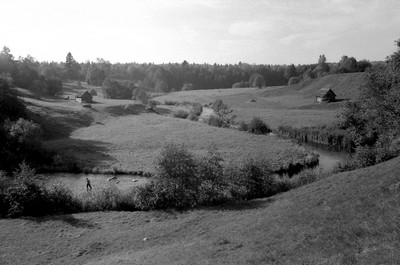
Photo 53. The sea-level lowering and continuous land uplift have promoted formation of terraces in the lower courses of the North-Estonian rivers. The Selja River. Photo by A. Miidel.
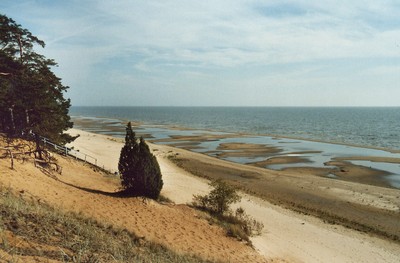
Photo 54. Peipsi beach at Smolnitsa. Photo by A. Miidel.
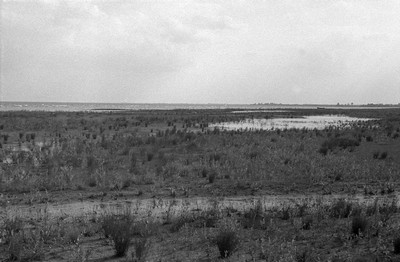
Photo 55. The shores in the western part of the lake are often swampy and overgown with bushes, bulrush and reeds. The shore at Lohusuu. Photo by A. Miidel.
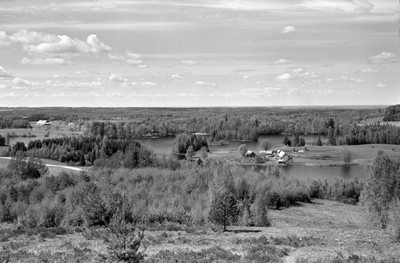
Photo 56. Small lakes in South Estonia are rich in organic deposits. Photo by R. Karukäpp.
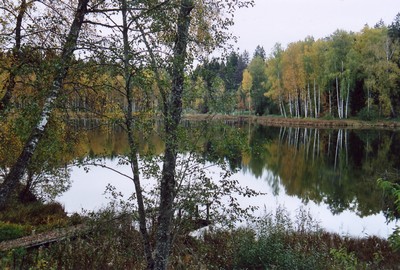
Photo 57. L. Neeruti Tagajärv was formed in a glaciokarst hollow near the esker ridge. Photo by A. Miidel.
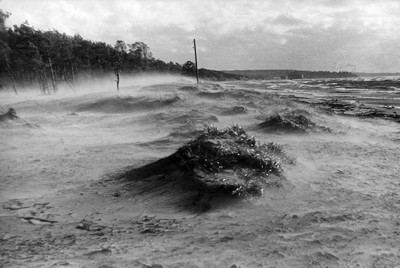
Photo 58. Sand storm on the Pirita beach, Tallinn. Photo by Karl Orviku.
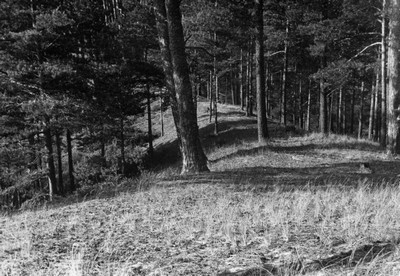
Photo 59. The largest dunes in Estonia were formed during the transgressive phases of the Baltic Sea. Dune ridge at Rannametsa (SW Estonia) with equally steep wind- and leeward slopes. Photo by A. Raukas.
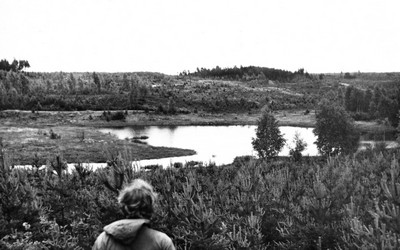
Photo 60. About 25 per cent of mires in Estonia are of limnogenous origin and infilling of lakes is in progress. Photo by R. Karukäpp.
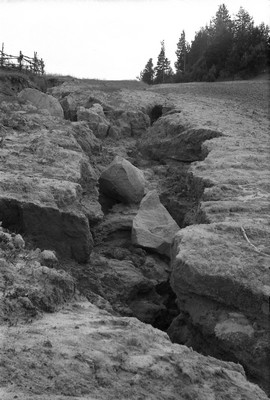
Photo 61. Eroded soils cover extensive areas in the hilly topography of southeastern Estonia and in these regions special soil-protective agrotechnology and crop rotation should be used. Photo by A. Miidel.
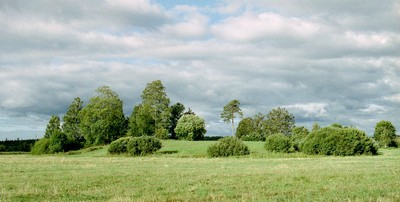
Photo 62. Lammasmägi Hill near Kunda. About 8500 years ago its surroundings were inhabited by hunters and fishers who lived in small clan communities and gave a name to the well-known Mesolithic Kunda Culture. Photo by G. Baranov.
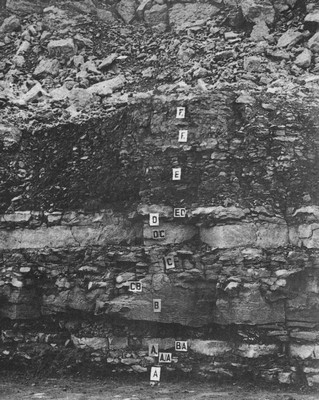
Photo 63. Aidu quarry. Section of the commercial bed. A, B, C, D, E, F1 and F2 are the kukersite oil shale beds. A/B, C/D, etc. are limestone interbeds. Photo by V. Piir.
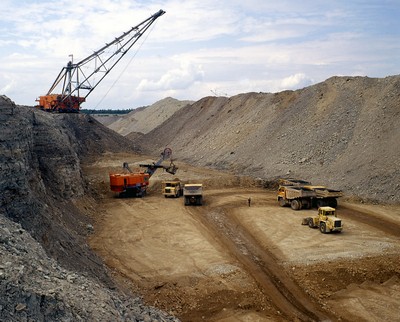
Photo 64. Opencast mining of oil shale in the Narva opencast mine. Photo by G. Baranov.
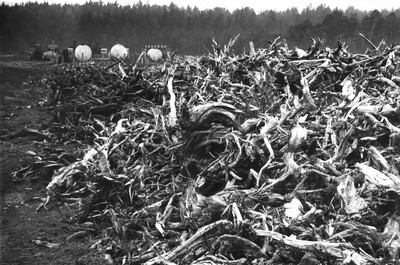
Photo 65. Estonian peat often contains stumps. Stump piles in the Imsi bog. Photo by M. Orru.
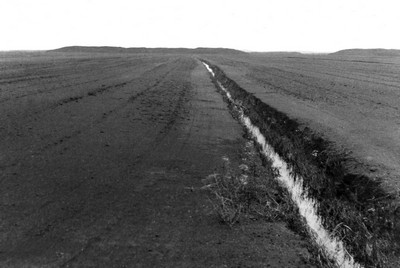
Photo 66. Milling field in the Puhatu Bog. Photo by M. Orru.
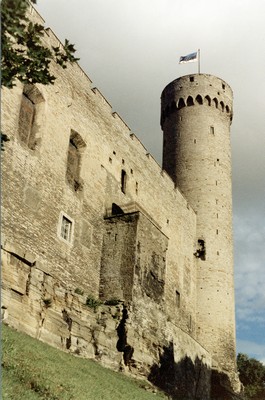
Photo 67. Toompea Castle (13th-14th centuries) in Tallinn, built from the rocks of the Lasnamägi Stage. Photo by J. Nõlvak.
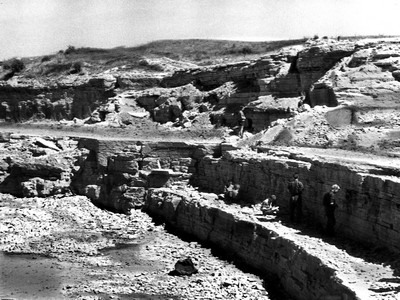
Photo 68. Southern part of the Lasnamägi quarry, which has provided main building stone for the Tallinn area. Photo by A. Rõõmusoks.
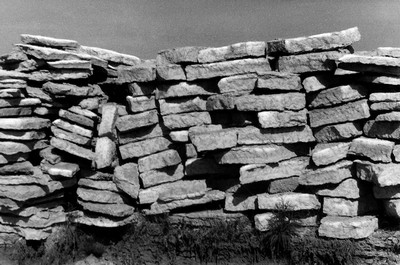
Photo 69. An excellent building stone of the Väo Formation from the Lüganuse quarry. Photo by A. Rõõmusoks.
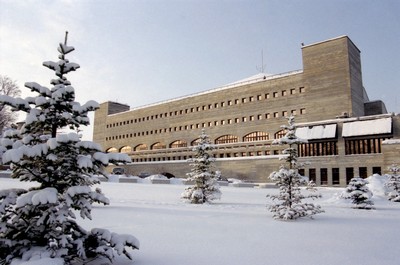
Photo 70. The building of the National Library in Tallinn (arch. Raine Karp), covered with facing slabs from the Tagavere quarry. Photo by H. Pärnaste.
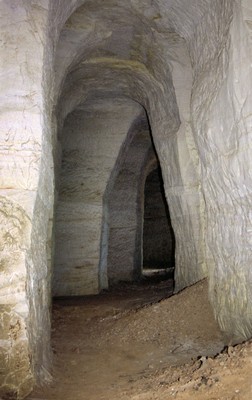
Photo 71. The technological sand deposit at Piusa is related to the Gauja Formation. Photo by G. Baranov.
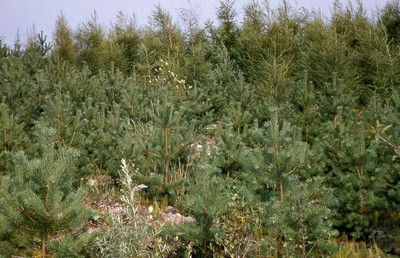
Photo 72. Young pine forest on the recultivated area of the Aidu quarry. Photo by A. Miidel.
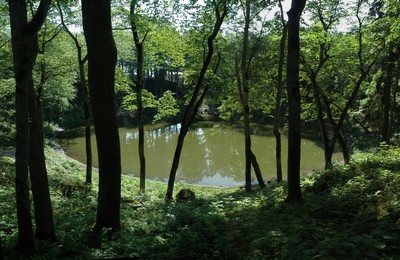
Photo 73. Kaali main crater. Photo by G. Baranov.

Photo 74. Dolomites uplifted and destroyed during the impact in the wall of the Kaali main crater. Photo by R. Tiirmaa.
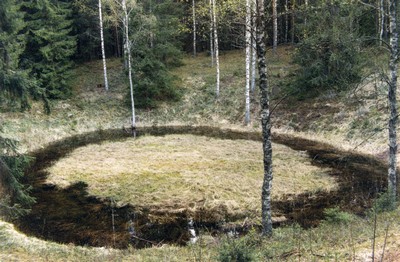
Photo 75. The meteorite crater Põrguhaud at Ilumetsa reaches through loose Quaternary sediments into the Devonian sandstones. Photo by J. Nõlvak.
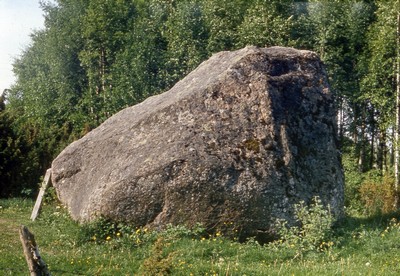
Photo 76. A lot of big boulders are scattered all over Estonia. Piretikivi on the Island of Saaremaa. Photo by U. Veske.
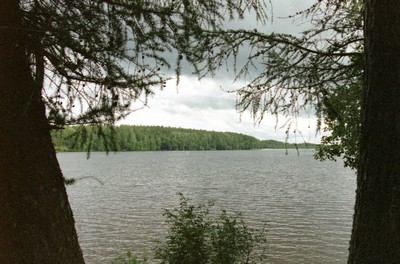
Photo 77. Both, Lake Uljaste and the picturesque esker are under protection. Photo by A. Miidel.
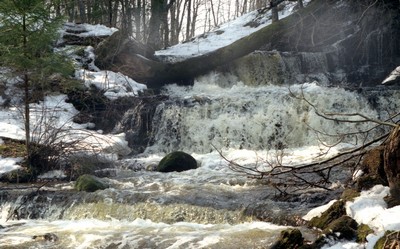
Photo 78. Breaking through the klint, the Vasaristi Brook forms a nice 3.6-m-high waterfall. Photo by A. Miidel.
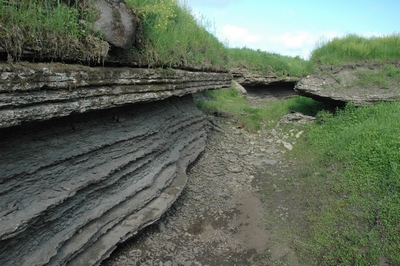
Photo 79. Karst valley in the Kostivere Karst Field. Photo by G. Baranov.
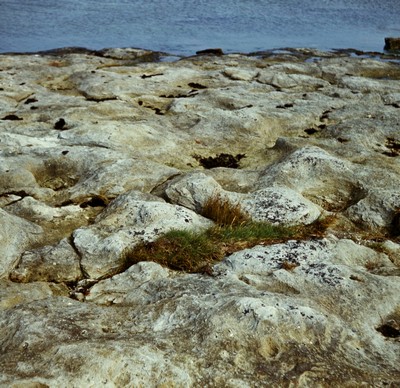
Photo 80. Limestones of the Jaagarahu Stage on the Vaika islets are rich in karst phenomena of different types. Photo by T. Märss.
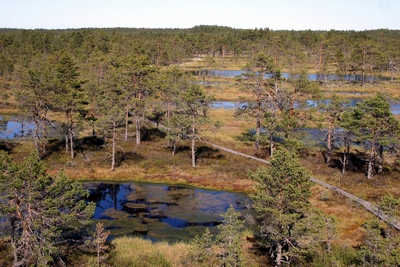
Photo 81. Bog-pools are especially sensitive to human impact. Most of the Viru Mire in the Lääne-Viru County is under nature protection. Photo by U. Veske.
































































